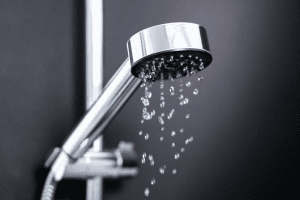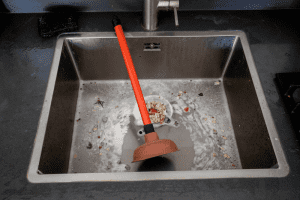Have you ever experienced the frustration of seeing your cabinets pulling away from the wall? Not only is it an eyesore, but it can also be a safety hazard. Cabinets that are not securely fastened to the wall can fall, causing damage or even injuring someone.
In this article, we will guide you on how to fix cabinets pulling away from the wall so that you can have peace of mind and a functional kitchen.
5 Reasons cause “Cabinets pulling away from wall”
Cabinets can pull away from the wall for several reasons. Some of the most common reasons include:
Incorrect installation:
As the same with gap between kitchen sink and granite, if the cabinets weren’t installed correctly from the start, they may begin to pull away from the wall over time.
This could occur if screws weren’t long enough or if they weren’t secured to wall studs.
Age and wear:
With age and wear, cabinets can begin to pull away from their wall anchors. This is especially true for cabinets made of lower quality materials or not installed correctly.
Excessive weight:
Cabinets that become overburdened with heavy items may start to separate from their walls over time, especially if they are being used for storage of large items like saucepans or pots.
However, kitchen cabinets aren’t indestructible, and even the most durable ones can gine way under too much weight. According to the Kitchen Cabinet Manufacturers Association, the weight limit of the average kitchen cabinet is 600 pounds.
Moisture:
Moisture can also cause cabinets to pull away from the wall with time, especially in kitchens and bathrooms where humidity levels are high.
Excess moisture causes cabinets to warp and weaken, leading to their separation from their wall anchors.
Structural issues:
In some cases, cabinets may pull away from the wall due to structural issues in your home. For instance, if the wall studs are not situated correctly or cannot support the weight of cabinets, they could start pulling away from their intended spot.
Tools & Materials Required to Fix Cabinets Pulling Away from the Wall
Tools:
- Drill
- Screwdriver
- Stud Finder
- Level
- Wood Glue (optional)
- Wood Shims (optional)
Materials:
- Long Screws (at least 2.5 inches)
- Pencil
- Tape Measure
Before beginning the repair, it’s essential to have all the necessary tools and materials on hand. A drill and screwdriver are essential for taking out screws and replacing them; a stud finder helps locate wall studs for extra support; a level guarantees cabinets are installed evenly and straight; wood glue and shims may be optional but may be needed if any damage or uneven installation occurs.
Long screws (at least 2.5 inches) are necessary for added support and to make sure the cabinets are securely fastened to the wall. A pencil and tape measure will also be necessary in order to mark where wall studs are located and measure for accurate placement of cabinets.
Step-By-Step instructions on how to fix cabinets pulling away from the wall:
Step 1: Empty the Cabinets
Before you start any repairs, it is essential to remove all items from the cabinets. This will make the job easier, prevent any damage to your items, and also reduce the weight on the cabinets.
Step 2: Locate the Wall Studs
To ensure a strong and secure fix, it is crucial to attach the cabinets to the wall studs. Use a stud finder to locate the studs behind the wall. Once you have found them, mark their location with a pencil.
Step 3: Remove the Screws
Remove the screws that are holding the cabinets to the wall. Depending on the size and depth of the screw, you may need a drill to remove the screws. Carefully remove the screws, and make sure to keep them in a safe place as you will need them later.
Step 4: Inspect the Cabinets
Inspect the cabinets for any damage or cracks that may have caused them to pull away from the wall. This is an essential step as repairing any damage before reattaching the cabinets will ensure that the problem does not reoccur in the future. If you find any damage, you can use wood glue to repair it.
Step 5: Reattach the Cabinets
Once the cabinets are inspected, and any damage is repaired, it is time to reattach them to the wall. Use long screws for added support and to ensure that the cabinets are secure. Make sure to use the marked locations of the wall studs for added support.
Step 6: Use Shims (optional)
If the cabinets are still not level after being reattached to the wall, you can use wood shims to level them out. Insert the shims between the cabinets and the wall until they are level. Shims can also be used if the cabinets were not installed evenly and need additional support.
Step 7: Replace the Screws
Replace the screws that were removed in step 3 with the long screws. Make sure to tighten them securely to prevent the cabinets from pulling away from the wall again. It is important to ensure that the screws are tightened securely, but not too tight to avoid damaging the cabinet or wall.
Step 8: Test the Cabinets
After reattaching the cabinets, it is important to test them to ensure they are secure and level. Open and close the doors and drawers to ensure they function properly. If you find any issues, you can adjust the shims or screws as needed.
Tips to Prevent Cabinets Pulling Away from Wall in the Future
To prevent cabinets from pulling away from the wall in the future, it is important to ensure that they are installed properly in the first place. Here are some tips to prevent this issue:
Tip 1: Use the right tools and materials: When installing cabinets, make sure to use the right tools and materials, such as long screws and a stud finder, to ensure a secure hold.
Tip 2: Find the wall studs: Before installing the cabinets, locate the wall studs and mark their location. Make sure to attach the cabinets to the wall studs for added support.
Tip 3: Use brackets: Use brackets to reinforce the cabinets and prevent them from pulling away from the wall.
Tip 4: Don’t overload the cabinets: Avoid overloading the cabinets with too much weight, as this can cause them to pull away from the wall over time.
This video can help you fix it in 5 minutes by helpful methods:
Conclusion
Cabinets pulling away from the wall are a common issue that can be easily fixed with the correct tools and steps. It’s essential to address this problem promptly in order to avoid any safety hazards or damage.
By following the steps outlined in this article, you can fix your cabinets and have a functional kitchen again; don’t hesitate to seek professional assistance if necessary – always prioritize safety when doing any home improvement project!
FAQs
Cabinets may pull away from the wall due to improper installation, the weight of the cabinet contents, or movement or settling of the house. This can also occur if the screws holding the cabinet to the wall become loose over time.
Yes, you can use caulk to fix cabinets in certain situations. Caulk can be used to fill gaps between cabinets and walls or between cabinets and countertops.
It can also be used to repair cracks or gaps in the cabinet itself, such as around the edges of doors or drawers.
Use a stud finder to locate the wall studs. Once you have located them, measure the distance between them to ensure that they are in the correct position.
If you can’t find the wall studs, you can use toggle bolts to secure the cabinets to the wall.
Wood glue can be used to add additional support to the repair, but it is not necessary in all cases. If the cabinet is securely attached to the wall after using longer screws and ensuring proper placement, wood glue may not be needed.






